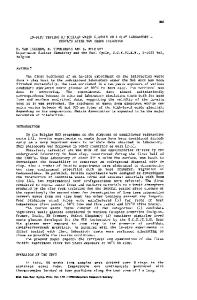Advances in in situ nanomechanical testing
- PDF / 2,567,876 Bytes
- 5 Pages / 585 x 783 pts Page_size
- 110 Downloads / 359 Views
Introduction Methods for nanomechanical testing have become a critical part of materials research, with the ever-increasing importance of nanomaterials and nanoscale phenomena in modern technological applications.1–3 Small-scale mechanical testing can also enable a “minimally invasive” approach to collecting mechanical data from bulk materials, providing information from individual microstructural components to areas of damage accumulation in materials under harsh environments.4 By simultaneously observing deformation phenomena and measuring mechanical response in situ, it is possible to connect nanomechanical testing information to models that describe both the subtlety and complexity of how materials respond to stress and strain. Furthermore, the in situ approach is crucial to obtain insight into the quality of a mechanical test, as small inaccuracies can lead to completely false conclusions. Therefore, quantitative mechanical testing conducted while observing deformation in situ is uniquely suited for studying mechanical properties since the fundamental deformation mechanisms are readily observed. Starting in the late 1950s, in situ straining stages for electron microscopes were developed that provided dynamic
observations of dislocation motion in metals.5–7 Electron microscopy is well suited for studying the mechanical properties of materials, since high spatial resolution is required for imaging individual defects in heterogeneous materials. However, complex defect structures lead to complications in connecting high-resolution observations to deformation phenomena that are inherently multiscale in nature. Therefore, multiscale analysis of materials is required to fully understand how a material responds to stress. Nonetheless, in situ nanomechanical testing provides the opportunity to apply controlled loading geometries, environments, and sensitive measurements that provide clarity in dynamic microstructural changes. The study of deformation phenomena has a history going back to the start of high-voltage electron microscopy.8–10 More recently, the introduction of quantitative measurement devices has enabled precise knowledge of the stress inside a sample.11,12 Recent reviews have described the impact of combined quantitative measurement and imaging at the individual defect level.13,14 In situ transmission electron microscopy (TEM) nanomechanical testing makes use of the sensitivity of TEM to lattice distortion that allows for visualization of both elastic and plastic deformation via strain fields from a length scale of
Andrew M. Minor, University of California, Berkeley, and Lawrence Berkeley National Laboratory, USA; [email protected] Gerhard Dehm, Max-Planck-Institut für Eisenforschung, and Ruhr-Universität Bochum, Germany; [email protected] doi:10.1557/mrs.2019.127
438
• VOLUME 44 • JUNE 2019 IP • www.mrs.org/bulletin © 2019 Materials Downloaded MRS fromBULLETIN https://www.cambridge.org/core. address: 95.181.217.163, on 25 Jul 2019 at 02:27:44, subject to the Cambridge Core terms of use, available at http
Data Loading...











